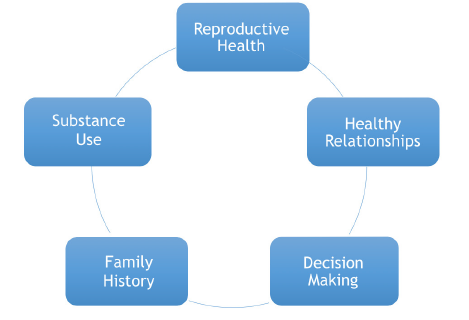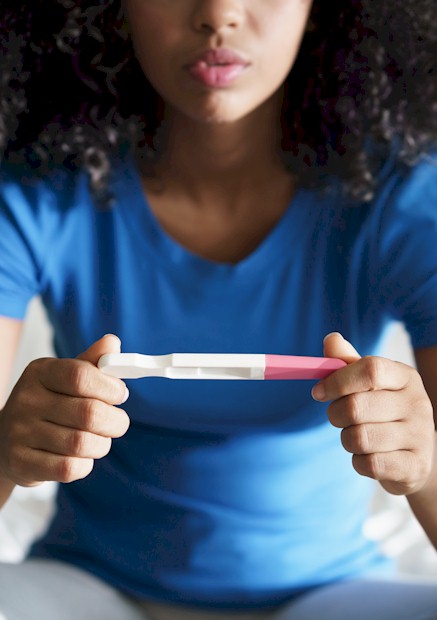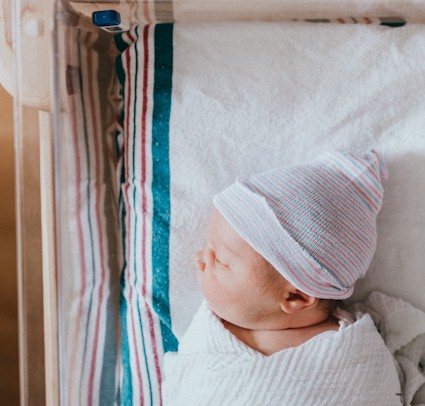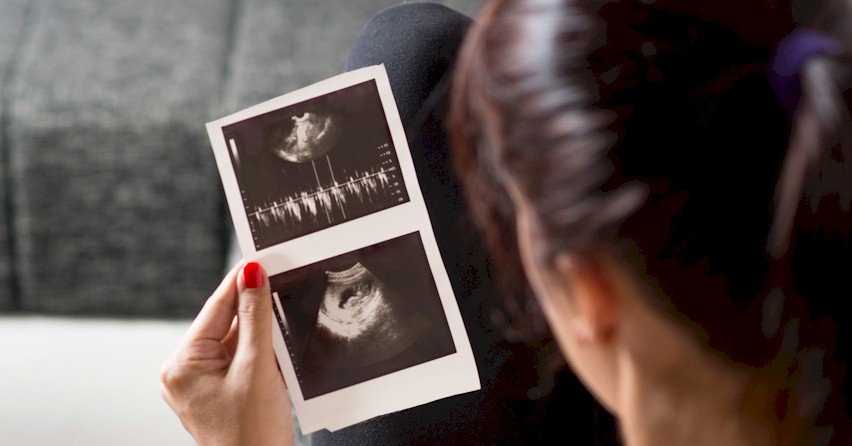Lesson 1
Lesson 1 Module 1
Introduction
This curriculum is aimed at young women, 18 - 25 years of age. It is rooted in discussing the realities of opioids, substance use, and your reproductive life plan.
This first module will discuss substance use and place it within the larger context of your life.
Putting It in Context
If we want to discuss your choices around building families and around the issues of substance use during pregnancy, which is a very real issue, we can’t avoid topics from other areas of your life.
Topics such as
What does a healthy relationship look like?
How do you make decisions?
What do you know about sexual health and pregnancy?
Does your family have a history of substance use or do you have relatives that have experienced addiction?
Why do you use alcohol, drugs or tobacco?
What if you use them while pregnant?
What does it mean to have a problem?
We want to provide education, resources and open the door to some self-reflection and conversations around young women and substance use. Drugs and alcohol are part of our lives for a variety of reasons, and many of you will have children, around half you will become pregnant at an unexpected time. Discussing these topics now and how they are interconnected is important not only for the present, but for your future.

Why your age group? Why this topic?
At this particular age, many of you will not have had children yet, many of you may have more if you already have had a child – but most importantly, about half of pregnancies are unintended, meaning you get pregnant on accident or when you were not planning to be.
If you are someone who excessively uses or abuses substances like alcohol and opioids, the likelihood that you become pregnant without meaning to is even higher. In addition, the issue of having sex in which a method of birth control is used can be reduced if you have a substance use issue. Having this conversation now is a form of prevention; to support efforts to reduce the number of babies being born with birth defects, longer term developmental issues, or symptoms of withdrawal at birth.

• Women are at a higher risk of becoming opioid dependent.
• About half of pregnancies are unplanned in the general population. (1)
• Almost 9 out of every 10 pregnancies are unplanned among women abusing opioids. (2)
Potential reasons why this is higher than in the general population include:
Did You Know:
Did you know about half of pregnancies are unplanned?
Polysubstance use is the norm
Pregnant women behave in much the same way as the rest of us. There is also the issue that if women are using alcohol, drugs, or are smoking during pregnancy, they are likely doing more than one of these things. This means a developing baby is often exposed to more than one psychoactive substance, or something that changes the way your brain works. This could potentially alter how major systems develop and affect a baby’s ability to grow in-utero (or while mom is still pregnant). Another potential result of polysubstance use is the impact on a child’s ability to control emotions later in life.
Though research has and is being done on exposure to drugs and alcohol during pregnancy, each individual woman may have changing levels of drug use, different kinds of nutrition, and a different combination of drugs and medications in her body – you can see why drawing associations directly between one drug and its effects can be challenging.
Did You Know:
The majority of women who use alcohol/drugs in pregnancy and during breast-feeding use more than one drug. This is known as polysubstance use.

Concern for Prenatal Exposure
When it comes to a woman’s use of substances while she is pregnant, why should we be concerned? Many times there are mixed or inaccurate messages being sent to women in popular media coverage. Some messaging comes directly from companies trying to increase their profit from the sale of substances such as alcohol, tobacco, marijuana, or prescription drugs. These messages may directly or indirectly encourage or increase use.
There is also often confusion about messaging around “how much is too much” or whether there is a “safe” level of substance use during pregnancy.

Substance use during pregnancy is also of great concern to the child welfare system in Georgia. Substance use/misuse in the primary caregiver for children, which is frequently the mother, is one of the leading causes of child abuse and neglect, and is the main driver of children entering Georgia’s child protection system (i.e., DFCS).
And finally, the number of babies born into our nation who have been prenatally exposed to something that we would be concerned about is difficult to keep track of. Because of the shame and stigma experienced by most women who use substances during pregnancy, and the issue of denial in substance use disorders, the estimates of the number of prenatal exposures is wide. The lowest estimate is less than 1% of all babies born in our country have been prenatally exposed to substances and the highest estimates are around 30% of babies born are currently prenatally exposed to something of concern.

Discuss:
Have you ever discussed drug/alcohol use and pregnancy before? How do young women get information about the impact of prenatal exposures?
Timing of Use
There are many things to be concerned about when a young woman becomes pregnant and continues to use substances. Some important concerns include the issues of timing, dose, and frequency.
In other words:
• When a pregnant woman uses is very important (timing)
• How much she uses is very important (dose)
• How often she uses is very important (frequency)
• Let’s look at how we all develop before we are born…

Did You Know:
“10 fingers, 10 toes” does not tell the whole story. Appearing “healthy” does not mean there will not be emotional, behavioral, or learning issues later in baby’s life.
Stages of a Baby’s Development
Before we are born, different periods are associated with the development of different parts of our physical bodies and brain. The very early stages in a woman’s pregnancy are important for the physical development of the brain, the heart, the face, the digestive system, and many other things. Unfortunately, if you are not planning a pregnancy or trying to become pregnant, you may not even be aware that you are pregnant during this critical period of a baby’s development.
A baby’s physical development continues throughout your pregnancy, including brain development. As you can see by the top line of this chart, a baby’s brain continues to develop from the day you become pregnant until the day of birth. That’s why it is never safe to use substances at any time during your pregnancy. There really isn’t a safe time or any safe amount of substance use when it comes to a healthy pregnancy and a healthy birth outcome.

